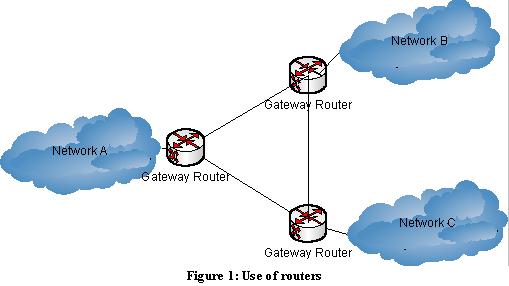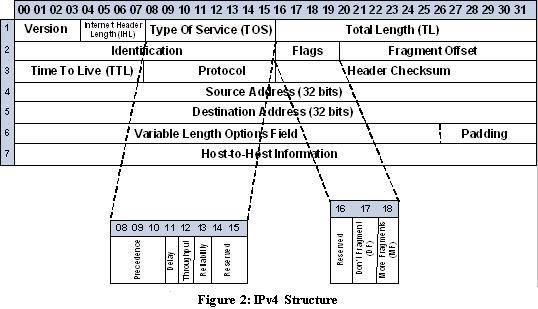IPv6 – The next generation Internet Protocol
Under the Action Plan eEurope 2005, it was recognised by the Commission that "IPv6 is essential on the road leading to network-based technologies, products and services that will contribute to an "everywhere", user-centric Information Society".This gave rise to the European Commission's Communication to the Council and the European Parliament (COM/2002/96) – "Next Generation Internet – priorities for action in migrating to the new Internet protocol IPv6", which creates a context for the EU Members to take action in focussing on broadband availability and the development of IPv6. These developments require a concerted action aiming at the structuring, consolidation and integration of European efforts on IPv6, notably through:
- Increased support towards IPv6 in public networks and services;
- The establishment and launch of educational programmes on IPv6;
- The adoption of IPv6 through awareness raising campaigns;
- The continued stimulation of the Internet take-up across the European Union;
- Increased support to IPv6 activities in the Framework’s Programme;
- The strengthening of the support towards the IPv6 enabling of national and European Research Networks;
- An active contribution towards the promotion of IPv6 standards work;
- The integration of IPv6 in all strategic plans concerning the use of new Internet services.
Following the European Commission's Communication, the present document explains the different aspects involved in IPv6 implementation that could lead to guidelines on the priorities for implementing and adopting IPv6 in public networks and services. The consequences for the market parties, including the users are also discussed.
IPv6 – The next generation of IP
"In the general sense, an internet is a computer network that connects several networks. The Internet is a publicly available internationally interconnected system of computers plus the information and services provided to their users using a TCP/IP suite of packet switching communications protocols1".
To interconnect two or more computer networks it is necessary to have a routing device to exchange traffic, and steer traffic via several different nodes on the path across a network to its destination. The devices used to interconnect different networks are routers. Others devices with specific functions like gateways or bridge are also used. All network elements such as routers, switches, gateways, bridges, LAN cards, need to have at least one IP address.

Different IP packet networks are normally interconnected by Routers that have added functionality to permit accounting between the interconnected networks. In other configurations they act also as interworking devices between different protocols.
Major benefits of the IPv6 – Why change?
The new version of IPv6 was conceived to replace the previous IPv4 standard that was adopted two decades ago as a robust, easily implemented standard.
However IPv4 is being used successfully to support the communications systems in the emerging information society and has been updated to extend its useful life (e.g. NAT mechanism, IPsec protocol), MPLS, Tunnelling). However its capabilities are somewhat limited in the following areas:
- Exhaustion of the IPv4 address space;
- Growth of the Internet and the maintenance of routing tables;
- Auto-configuration;
- Mobility;
- Security;
- Quality of service.
IP addressing architecture
An IP address is a binary number, which identifies any user’s computer directly connected to the Internet. An IPv4 address consists of 32 bits, but it is usually represented by a group of four numbers (8 bits hexadecimal), from 0 to 255 ranges and separated by full stops. An example of this representation is showed bellow:
124.32.43.4
Several domain names can also be linked to the same IP address, in effect similar to having more than one name for the same person. The format of the IPv4 header is showed in figure 2:

The most recognized change from IPv4 to IPv6 is the length of network addresses. The IPv6 addresses have 128 bits length. The 128 bits provide approximately 3.4x1038 separate values. An IPv6 address consists of eight numbers in the hexadecimal format, from 0 to 65535 (decimal) ranges and separated by a colon ":". An example of this new representation is showed following:
FECA:0000:234A:0043:AB45:FFFF:9A3E:000B
In other to compare with the IPv4 header next figure 3 shows the IPv6 format header:

Services and Equipments
The "converging" new generation communication networks are using and planning to use an IP based network infrastructure with multi-functional end-devices, always on, always reachable peer-to-peer, with mobility, quality of service and end-to-end security. Even non telecom industries such as music, radio and television will be supported in the IP environment. There are applications that need or will benefit from IPv6 such:
- Mobile broadband IP;
- Mobile IP broadcast;
- Peer to peer VoIP;
- Digital radio;
- iTV and IPTV;
- Grids;
- P2P multiplayer games;
- RFID;
- Control networks;
- Remote manufacturing systems;
- Sensor networks;
- Microsoft (native support of IPv6 in the next version of Windows – Longhorn).
- Powerline Communication;
- Wi-Fi;
- Wi-Max;
- ZigBee;
- Unlicensed Mobile Access (UMA).
The current IP-based network will gradually migrate from IPv4 to IPv6. Signalling interworking will need to be supported between the IPv6 network and the existing IPv4 network. Mapping of signalling between IPv6 and IPv4 is required. From the deployment point of view, there are three stages of evolution scenarios:
- First stage (stage 1): IPv4 ocean and IPv6 island;
- Second stage (stage 2): IPv6 ocean and IPv4 island;
- Third stage (stage 3): IPv6 ocean and IPv6 island.
- Dual stack – to allow IPv4 and IPv6 to coexist in the same devices and networks;
- Tunnelling – to avoid order dependencies when upgrading hosts, routers or regions;
- Translation – to allow IPv6 only devices to communicate with IPv4 only devices.
IPv6 and the Next Generation Network NGN
The current IP network is in a process of transition from IPv4 to IPv6. Mobile access networks are one of the major potential application areas for IPv6. This is mainly due to the large address space of IPv6. Besides, a large percentile of packets in such networks will carry real time traffic such as voice or video. These applications are expected to be important for IPv6, as they may depend heavily on the QoS mechanism in IPv6 networks. Nevertheless 3GPP is considering using IPv4 addresses initially instead of IPv6 addresses.
From the signalling point of view, the IPv6 protocol has many features related to QoS and other capabilities. By utilising IPv6 features, such as ease of defining explicit route, flow labelling capability and improved support for extensions and options like hop-by-hop option header or destination option header, it is possible to improve the efficiency of IPv6 networks without modifying the existing signalling protocols.
IPV6 – THE NEXT GENERATION INTERNET PROTOCOL
Electronic Communications Committee (ECC)
within the European Conference of Postal and Telecommunications Administrations (CEPT)
Oulu, March 2006
Comments: